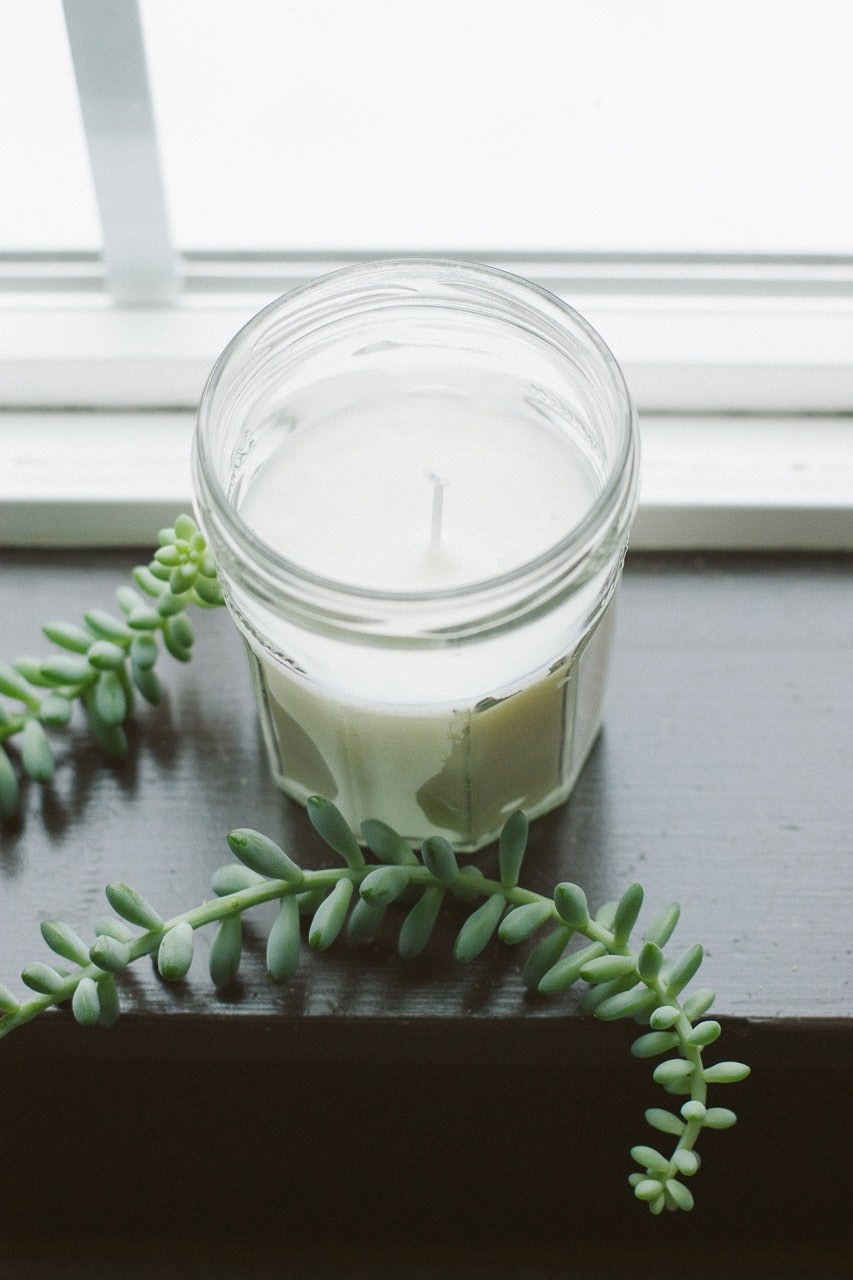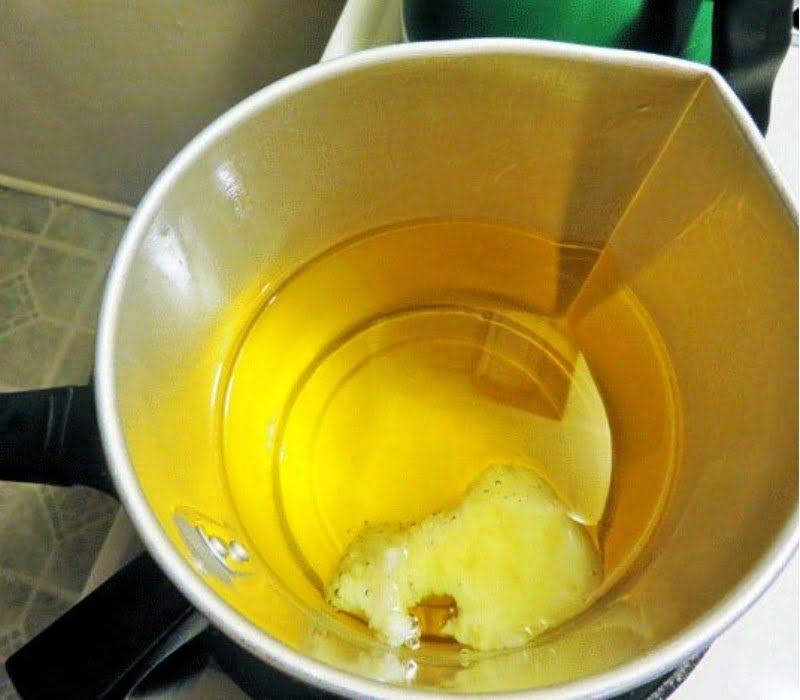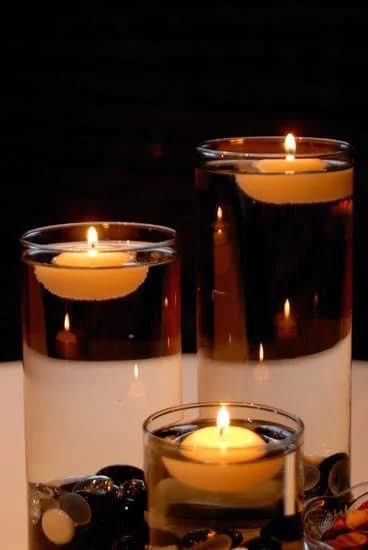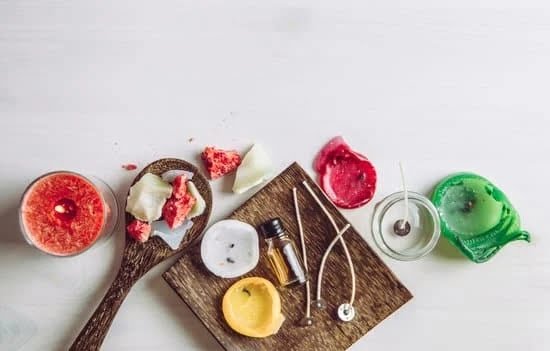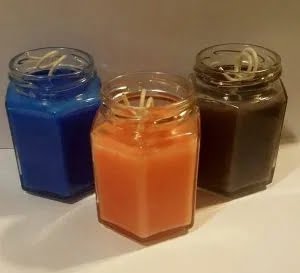Interested in learning how to blend essential oils for candle making? Look no further. In this comprehensive guide, we will explore the fascinating world of candle making with essential oils. With their rising popularity, essential oils have become a sought-after ingredient in creating personalized scents for candles.
Not only do essential oils add a captivating fragrance to candles, but they also offer various benefits. From promoting relaxation and stress relief to energizing and invigorating the senses, blending essential oils allows you to create a truly unique scent experience. Whether you’re a seasoned candle maker or just starting out, this article will provide you with the knowledge and techniques needed to create your own signature candle scents.
In the following sections, we will delve into the basics of understanding essential oils and their properties. We will discuss the process of extracting these precious oils and highlight the different notes used in blending. You’ll also discover an extensive range of essential oils suitable for candle making, each belonging to a distinct fragrance family with its own characteristics.
So get ready to embark on a fragrant journey as we explore the art of blending essential oils for candle making. Whether you’re looking to create a relaxing ambiance or an invigorating atmosphere, this guide has got you covered. Let’s dive in and unlock the secrets of creating beautifully scented candles using the power of essential oils.
Understanding Essential Oils
Essential oils are highly concentrated plant extracts that are used in a variety of applications, including candle making. Understanding the basics of essential oils is crucial for creating personalized and unique scents for candles.
The extraction process of essential oils involves steam distillation or cold pressing, where the aromatic compounds from plants are carefully extracted. These compounds contribute to the scent and therapeutic properties of essential oils. Each essential oil has its own set of properties and fragrance profile, making it important to select the right oils for blending.
In blending essential oils for candles, it is helpful to understand the concept of top, middle, and base notes. Top notes are the first scents that are detected when the candle is lit and tend to be lighter and more volatile. Middle notes emerge after the initial burn and serve as the heart of the scent. Base notes are richer and longer-lasting scents that anchor the blend and provide depth.
Some common examples of top note essential oils include citrus oils like lemon or bergamot, while floral oils like lavender or geranium often serve as middle notes. Spices such as cinnamon or clove can be used as base notes to add warmth to a blend. By understanding these different note classifications, candle makers can create well-balanced blends that unfold over time when burned.
| Essential Oil | Properties | Note Classification |
|---|---|---|
| Lavender | Calming, Floral | Middle |
| Lemon | Energizing, Citrusy | Top |
| Sandalwood | Grounding, Woody | Base |
Understanding the properties and note classifications of essential oils is just the first step in creating harmonious blends for candles. In the following sections, we will explore the process of selecting the right essential oils for candle making and various blending techniques that can be used to achieve the perfect scent combination.
Selecting the Right Essential Oils for Candle Making
When it comes to candle making, selecting the right essential oils is crucial in creating a fragrant and enjoyable experience. With a wide variety of essential oils available, it can be overwhelming to choose the perfect ones for your candles. In this section, we will explore the various essential oils suitable for candle making and highlight the different fragrance families and their unique characteristics.
Firstly, let’s delve into some of the essential oils that are commonly used in candle making. Lavender oil is a popular choice due to its calming and relaxing properties. It blends well with other floral scents like rose and chamomile, resulting in a soothing ambiance. Citrus essential oils such as sweet orange and lemon are also widely used for their uplifting and energizing qualities. They pair well with herbs like peppermint or eucalyptus to create invigorating scents.
In addition to single-note essential oils, blending different oils can lead to complex and captivating scents. Understanding fragrance families can help you create balanced blends. Woody notes like cedarwood or sandalwood fall into the base note family, adding depth and grounding to your candles.
Floral notes such as jasmine or ylang-ylang belong to the middle note family, providing a pleasant heart to your scent combinations. Finally, citrus or minty notes are considered top notes that provide an initial burst of freshness.
Experimenting with different combinations from each fragrance family can open up endless possibilities for creating your own unique scent profiles. You may also consider exploring other fragrance families such as herbal (rosemary, basil), spicy (cinnamon, clove), or oriental (patchouli, vanilla). By selecting complementary essential oils from various families, you can develop harmonious blends that cater to different moods or occasions.
Remember when selecting essential oils for candle making, it is important to use high-quality oils that are specifically labeled for candle making. This ensures their safety and compatibility with the other components of your candles.
Additionally, be mindful of any potential allergens or irritants in the oils, as some people may have sensitivities to certain scents. With a thoughtful selection of essential oils, you can create candles that not only look beautiful but also fill the room with captivating aromas.
Essential Oil Blending Techniques
When it comes to candle making, blending essential oils is an art that allows you to create a personalized scent experience. By combining different oils, you can create unique fragrance profiles that cater to your preferences or the mood you want to set in your space. In this section, we will explore some essential oil blending techniques that will help you find the perfect scent for your candles.
One important aspect of blending essential oils is layering scents. Layering involves combining oils with different aromas and volatility to create a multi-dimensional fragrance profile. This technique adds depth and complexity to your candle’s scent, making it more interesting and captivating. To achieve a well-balanced layered scent, consider using a blend of top, middle, and base note oils.
- Top notes: These are the first scents you notice when you smell a candle. They are light and fresh, creating an initial impression before evaporating quickly. Some examples of top note oils include citrus (e.g., lemon, orange), herbal (e.g., peppermint, eucalyptus), and fruity (e.g., bergamot, grapefruit) oils.
- Middle notes: Also known as heart notes, these scents emerge after the top notes dissipate. They form the body of the fragrance and have a medium volatility. Common middle note essential oils include floral (e.g., lavender, rose), spicy (e.g., cinnamon, clove), and woody (e.g., cedarwood, sandalwood) oils.
- Base notes: These scents provide depth and longevity to the fragrance. They are typically rich and complex with low volatility. Base note oils include resinous (e.g., frankincense, myrrh), earthy (e.g., patchouli, vetiver), and balsamic (e.g., vanilla bean extract) oils.
Now that you understand the importance of layering scents, let’s explore some blending techniques that will help you create a perfectly balanced candle fragrance:
- Harmonizing: This technique involves combining oils that have similar scent profiles or belong to the same fragrance family. For example, you can blend different floral oils like lavender and ylang-ylang for a harmonious and soothing scent combination.
- Balancing: To achieve a well-rounded aroma, try blending oils with contrasting scent characteristics. For instance, pair a citrus top note oil like bergamot with a warm and earthy base note oil like sandalwood.
- Accenting: If you have a specific essential oil that you want to highlight in your candle, accenting is the way to go. Choose one dominant oil as your base and add smaller amounts of other complementary oils to enhance its aroma.
By experimenting with these blending techniques and adjusting the proportions of each essential oil, you can create unique scents that cater to different moods or occasions. Remember to keep track of your blend combinations in a scent journal for future reference and repeatable results.
Essential Oil Proportions and Safety Guidelines
When it comes to blending essential oils for candle making, getting the right proportions is crucial for achieving the desired scent. Each essential oil has its own unique characteristics and potency, so it’s important to understand how to combine them effectively. Here are some key guidelines to keep in mind when blending essential oils for candles:
- Recommended Ratios: It’s recommended to start with a total of 30 drops of essential oil per ounce of candle wax. This allows for a balanced scent without overpowering the candle. However, this can be adjusted based on personal preference and strength of the oils used. Some oils may have a stronger fragrance than others, so a smaller quantity may be needed.
- Layering Scents: One of the benefits of blending essential oils is the ability to create complex and layered scents. To achieve this, it’s important to understand the concept of “top, middle, and base notes.” Top notes are lighter and more volatile scents that are immediately noticeable when the candle is lit. Middle notes provide body and balance to the scent, while base notes are heavier scents that linger after the candle has burned.
- Safety Precautions: While working with essential oils can be enjoyable, it’s important to prioritize safety. Some essential oils can cause skin irritation or allergic reactions in certain individuals. Always conduct a patch test before using new oils and ensure proper ventilation when working with them. Additionally, it’s important to avoid exposing candles containing certain essential oils to direct sunlight as they may oxidize and lose their fragrance.
Remember that these guidelines are just a starting point for your experimentation with different oil blends. Every individual’s sense of smell is unique, so what works for one person may not work for another. Don’t be afraid to try different combinations and adjust ratios according to your preferences. The art of blending essential oils for candles is all about finding your signature scent that brings joy and relaxation into your space.
Creating Your Signature Candle Scent
Creating your own signature candle scent can be a fun and rewarding experience. Not only does it allow you to personalize your candles, but it also adds a unique touch to your space. Follow this step-by-step guide to create your own custom blend of essential oils for a one-of-a-kind candle scent.
Step 1: Gather Your Essential Oils and Supplies
Before you begin blending your essential oils, make sure you have all the necessary supplies on hand. This includes a selection of essential oils, preferably from different fragrance families, as well as a measuring cup, dropper, and a clean glass container for mixing. You may also consider having some blotting paper or coffee beans nearby for scent testing.
Step 2: Start with a Base Note
Begin by choosing a base note oil, which is typically strong and long-lasting. Some popular options include cedarwood, patchouli, or sandalwood. Add 10-25 drops of your chosen base note oil into the container. Remember that you can always adjust the quantity later if needed.
Step 3: Add Middle and Top Notes
Next, add your middle notes to create complexity and balance in your scent blend. Examples of middle note oils include lavender, geranium, or rosemary. Start with around 5-15 drops of middle note oil and carefully mix it with the base note oil in the container.
Finally, finish off your blend with top notes that provide an initial burst of fragrance when the candle is lit. Popular examples of top notes are citrus oils like lemon, orange, or grapefruit. Add another 5-10 drops of top note oil to complete your blend.
Step 4: Mix and Test
Once all the essential oils are added to the container, mix them gently by swirling or stirring with a clean utensil. Take a moment to inhale the aroma and evaluate if any adjustments need to be made. You can do this by dabbing a small amount of the blend onto blotting paper or coffee beans and smelling it after a few minutes.
Step 5: Adjust and Document
If your blend isn’t quite what you envisioned, don’t worry. Essential oil blending is all about experimentation. If you’d like to enhance a particular note, add a couple more drops of that oil to the mix. Make sure to document the exact measurements of each oil used in a scent journal for future reference.
By following these steps, you’ll be on your way to creating your very own signature candle scent. Remember, there are no right or wrong combinations – it’s all about finding what appeals to your personal preferences. So let your creativity flow and enjoy the process of exploring different essential oil blends for your candles.
Essential Oil Combinations for Different Moods and Occasions
Relaxation
When creating a candle scent for relaxation, it’s important to choose essential oils known for their calming properties. Lavender is often the go-to choice for relaxation as it is known to reduce stress and promote sleep. Combine lavender with a few drops of chamomile oil to enhance its soothing effects. If you prefer a more citrusy aroma, try blending bergamot and ylang-ylang essential oils together for a scent that promotes relaxation and uplifts the mood.
Energizing
To create an energizing candle scent, opt for invigorating essential oils such as peppermint or eucalyptus. These oils are known for their stimulating properties and can help increase focus and refresh the mind. Combine peppermint with a few drops of lemon or grapefruit oil for a revitalizing scent that boosts energy levels. Alternatively, you can blend eucalyptus with rosemary and spearmint for a rejuvenating aroma that enhances mental clarity.
Romantic Ambiance
If you’re looking to set the mood for romance, there are several essential oil combinations that can create an alluring ambiance. Ylang-ylang is often considered an aphrodisiac and pairs well with floral scents like rose or jasmine. Combine ylang-ylang and rose essential oils for a romantic aroma that evokes feelings of love and sensuality. For a more exotic twist, try blending sandalwood with patchouli and vanilla essential oils to create a seductive fragrance perfect for date nights.
Remember to adjust the number of drops used based on personal preference and room size. For smaller rooms or if you prefer a milder scent, start with fewer drops of each oil and increase gradually until achieving the desired strength.
By experimenting with different essential oil combinations, you can create unique candle scents that suit various moods and occasions. Whether you’re seeking relaxation, an energy boost, or a romantic ambiance, blending essential oils allows you to personalize your candle creations for a one-of-a-kind scent experience.
Testing and Adjusting
Importance of Testing Scent Potency and Diffusion
Once you have blended your essential oils for candle making, it is crucial to test the scent potency and diffusion before pouring them into your candles. This step allows you to fine-tune your fragrance and ensure that it meets your desired strength and throw. Testing also allows you to identify any potential issues or adjustments needed before committing to a large batch of candles.
To test the scent potency, you can use a process called cold sniffing. Simply open the container holding your blended oils and take a few gentle sniffs to gauge the intensity of the aroma. Pay attention to whether the scent is too weak or overpowering, as this will determine if any adjustments are necessary.
Another important aspect to consider when testing your candle scent is diffusion. Diffusion refers to how well the fragrance permeates the air when the candle is lit. Light one of your candles with a wick in a small, well-ventilated area and let it burn for at least an hour. Take note of how far the scent carries and whether it fills the space adequately. If you find that the diffusion is not satisfactory, adjustments may be needed.
Troubleshooting Tips for Modifying Scent Strength
If you find that your candle scent needs some tweaking after testing, there are several ways to adjust its strength:
- Add more essential oils: If your scent is too weak after burning, try adding a small amount of additional essential oil blend directly into your melted wax before pouring it into containers. Start by adding a few drops at a time until you achieve the desired aroma.
- Dilute with carrier oil: On the other hand, if your fragrance is overpowering, diluting it with a carrier oil can help mellow out the scent without compromising its overall character. Gradually add drops of carrier oil such as fractionated coconut oil or sweet almond oil to your essential oil blend until you achieve a more balanced aroma.
- Blend with unscented wax: Another way to adjust the scent strength is by blending your scented wax with unscented wax. This method allows you to control and lessen the concentration of the fragrance without altering its original blend.
Remember, it is important to test these modifications on a small scale before making adjustments to larger batches. Additionally, keep detailed records of any changes made, such as the number of drops added or amount of carrier oil used, so that you can reproduce the desired results in the future.
By testing and adjusting your candle scent, you can ensure that each batch meets your expectations and creates an enjoyable sensory experience for yourself and others. Remember that scent preferences vary from person to person, so trust your instincts and continue experimenting until you find the perfect balance for your candles.
Storing and Preserving Essential Oil Blends for Future Use
Once you have created a beautiful blend of essential oils for your candles, it is important to store and preserve them properly to maintain their potency and fragrance quality. By following the right storage methods, you can ensure that your essential oil blends remain fresh and ready for future use.
To start, it is recommended to store your essential oil blends in dark glass bottles. Amber or cobalt blue glass bottles are excellent choices as they help protect the oils from light exposure. Light can cause the oils to oxidize and lose their aromatic qualities over time. It is best to avoid storing essential oils in clear glass or plastic bottles as they don’t provide adequate protection against light.
In addition to using the right type of bottle, it is also important to store your essential oil blends in a cool and dark place. Excessive heat or sunlight can negatively impact the oils’ stability and scent profile. Aim for a storage location that is away from direct sunlight, high temperatures, and fluctuations in temperature.
Furthermore, it is crucial to keep your essential oil blends tightly sealed when not in use. This helps prevent air from entering the bottle, which can lead to oxidation and potentially alter the scent of your blend. Make sure the cap or lid is secured tightly after each use.
Lastly, it’s worth noting that essential oils have varying shelf lives due to their different chemical compositions. Some oils may stay fresh for several years, while others may begin to lose their potency after a few months. It’s advisable to label each bottle with the date of creation so you can keep track of when an oil blend was made.
By following these storage guidelines and using your essential oil blends within their recommended shelf life, you can enjoy the full aromatic experience of your custom candle scents for years to come.
Conclusion
In conclusion, blending essential oils for candle making is a truly artistic and scientific process that allows you to create personalized scents that enhance the ambiance of your space. By understanding the extraction process and properties of essential oils, as well as the different fragrance families and blending techniques, you can craft unique combinations that suit your preferences and needs.
Whether you are looking to relax, energize, or set a romantic mood, there are essential oil blend recipes for every occasion.
It is important to note that when working with essential oils, safety should always be a priority. Following recommended ratios for blending essential oils in candles and being aware of potential allergens and sensitivities can ensure a safe and enjoyable experience. Additionally, keeping a scent journal can help you track your favorite combinations and enable you to recreate them in the future.
Finally, it is time to unleash your creativity and experiment with different essential oil blends for candle making. The possibilities are endless as you fine-tune your candle scent according to personal preference and room size. Embrace the art of essential oil blending in candle making as a delightful way to enhance your space with captivating aromas. So go ahead, ignite your imagination and let the power of scent elevate your candle-making experience.
Frequently Asked Questions
How do you mix essential oils for candle fragrance?
Mixing essential oils for candle fragrance requires careful consideration of the desired scent profile and individual preferences. To create a balanced and pleasing fragrance, it is best to use a combination of top, middle, and base note essential oils. Top notes provide initial freshness and lightness, middle notes offer complexity and depth, while base notes give stability and longevity to the scent.
Begin by selecting essential oils that complement each other in terms of their aroma profiles. For example, you could mix citrus (top note), lavender (middle note), and vanilla (base note) for a fresh yet comforting scent. Generally, start with approximately 15-20 drops per ounce of carrier oil or wax blend when blending multiple essential oils.
What is the ratio of essential oils to candles?
The ratio of essential oils to candles will depend on several factors such as personal preference, the strength of the chosen essential oils, and the type of wax being used. It is important to not exceed recommended guidelines for safe candle usage as too much fragrance oil can affect burn quality or even become overwhelming when lit.
A common guideline is to use around 3-8% fragrance oil per pound of wax. This could translate to approximately 0.5-1 oz (or 14-28 grams) of fragrance oil per pound (16 oz) of soy wax.
How many drops of essential oil for 4 oz candle?
When adding essential oil to a 4 oz candle, it is advisable to start with a conservative approach considering the potency of essential oils. Around 20-25 drops should typically be sufficient for a noticeable fragrance within that size range.
However, keep in mind that certain factors like personal preference, strength of the chosen essential oil(s), and type/quality of candle wax may influence this number slightly. If you desire a stronger scent throw or find the initial result too subtle, you can gradually increase the amount by adding one or two additional drops at a time until you achieve your desired level of fragrance intensity without overpowering it.

Welcome to my candle making blog! In this blog, I will be sharing my tips and tricks for making candles. I will also be sharing some of my favorite recipes.

